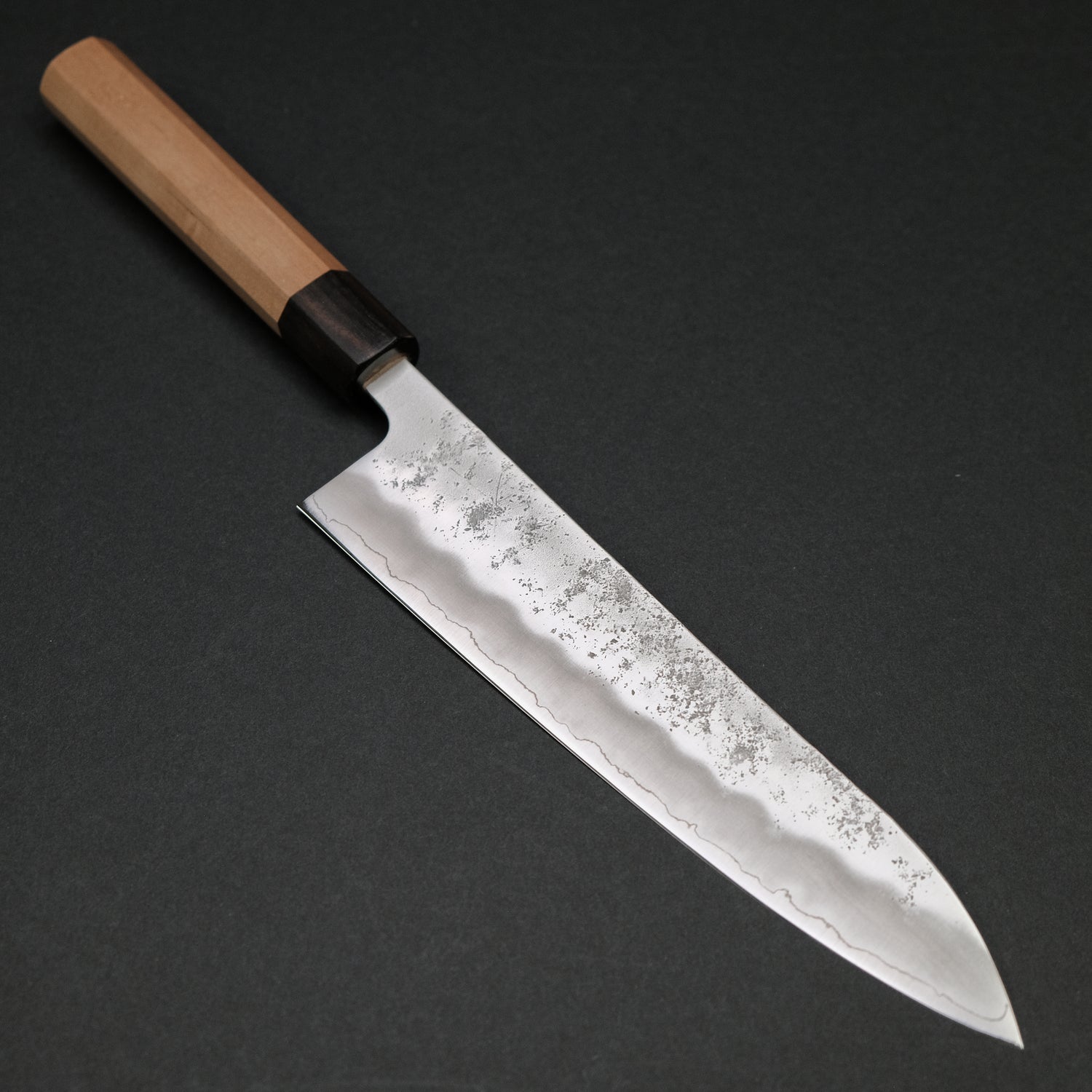Knife Care
Knife Care & Handling Guide
Japanese knives are precision tools — thin, hard, and incredibly sharp. With the right care, they will serve you beautifully for years to come. Here's how to protect your blade and keep it performing at its best.
What to Cut — and What to Avoid
-
Only use the knife for ingredients it’s designed for.
-
Do not cut bones, frozen foods, or other hard items.
-
Avoid twisting, bending, or forcing the knife through tough materials; this can cause irreparable damage.
Use the Right Cutting Surface
-
Always cut on a wooden or soft plastic cutting board.
-
Avoid hard surfaces like glass, marble, or bamboo, which can dull or chip the blade.
-
Use proper cutting technique; Japanese knives are thinner and harder, making them more delicate than Western blades.
Cleaning & Storage
-
Always hand wash your knife with mild soap and water.
-
Do not put your knife in the dishwasher.
-
Avoid boiling water or extreme heat/cold. This can damage both the steel and the handle.
-
After washing, dry immediately with a soft cloth.
-
Store in a dry place, ideally in a saya (wooden sheath), knife roll, or protective blade guard.
Carbon Steel Knives
-
Carbon steel can rust within minutes if left wet.
-
Wipe the blade clean and dry after each use.
-
If storing for more than a few days, lightly oil the blade with Tsubaki oil or food-safe mineral oil (never cooking oil).
-
Expect a patina to develop over time. This dark colouration is natural and helps protect the blade from rust. No two patinas are alike, giving your knife unique character.
Stainless Steel Knives
-
“Stainless” means stain-resistant, not stain-proof.
-
Like carbon steel, stainless knives need to be cleaned and dried after each use.
-
Different stainless steels offer varying levels of corrosion resistance, but neglect will still lead to rust.
Sharpening & Honing
-
Use a whetstone to maintain and sharpen your knife.
-
Avoid pull-through or electric sharpeners. These can permanently damage the edge.
-
If you’re unfamiliar with whetstones, we recommend:
-
Taking a sharpening workshop
-
Visiting a professional knife sharpener
-
Using our sharpening services
-
Important Notes
-
Do not use your knife for unintended purposes.
-
Do not soak your knife or leave it wet.
-
Any damage resulting from misuse or neglect is not considered a manufacturer defect.
-
If you have any questions about knife care or maintenance, contact us — we’re happy to help.

